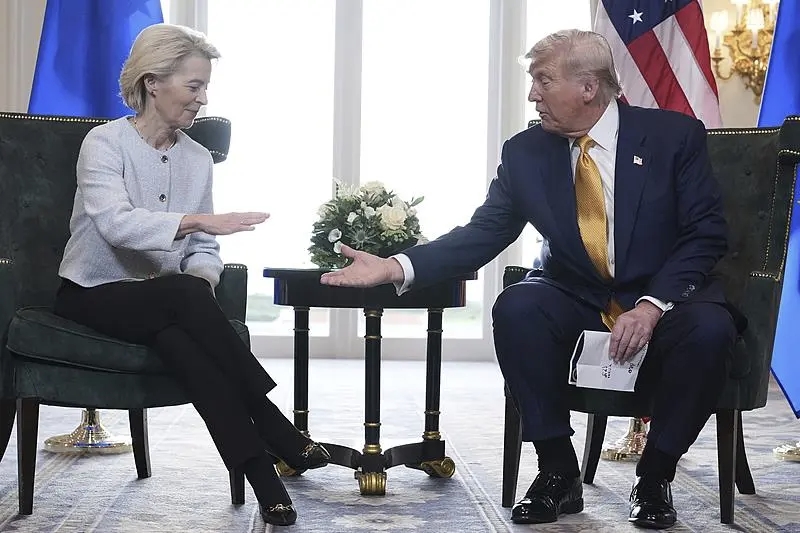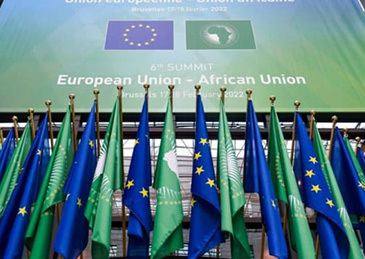
On July 27th local time, after intense negotiations, the United States and the European Union reached a 15% tariff agreement, outlining a new framework for their trade relations. This agreement not only covers key commodity sectors such as automobiles, semiconductors, and pharmaceuticals but also comes with the EU's commitment to an additional $600 billion in investment in the US and $750 billion in energy product purchases, sending ripples through the global economic landscape.
In terms of the agreement's content, the 15% tariff rate represents a "compromise" for EU goods exported to the US. Compared to the 30% tariff previously threatened by Trump, this undoubtedly reduces the burden on EU industries; however, it still falls short of the EU's long-standing goal of "zero tariffs." The automotive industry is a typical example. Originally, EU automobile exports faced a high tariff of 27.5%, which has now dropped to 15%. This is a significant boon for EU automakers such as Volkswagen, Mercedes-Benz, and BMW, reducing their cost pressure in the US market and enhancing price competitiveness.
In the semiconductor and pharmaceutical sectors, the unified 15% tariff rate will also reshape the industrial ecology. As the cornerstone of the technology industry, a stable tariff environment is conducive to long-term investment planning and supply chain layout for enterprises on both sides of the Atlantic. The pharmaceutical industry is related to people's livelihood and public health security, and the new tariff policy will affect the import and export costs and market prices of drugs, thereby impacting consumers' medical expenses and pharmaceutical companies' profit margins.
Beyond tariff adjustments, the EU's commitment to $600 billion in investment in the US and $750 billion in energy product purchases involves complex strategic considerations. In terms of investment, EU enterprises may be attracted by the US's huge consumer market, advanced technological research and development environment, and preferential investment policies. By increasing investment, they can deeply integrate into the US economic system and gain more business opportunities. At the energy procurement level, after the Russia-Ukraine conflict, the EU has been committed to reducing its dependence on Russian energy, and the US's abundant energy resources such as shale gas have become an alternative. The EU's large-scale procurement of US energy products not only meets its own energy needs and ensures energy security but also strengthens economic ties with the US to a certain extent.
This US-EU agreement has far-reaching implications for the global economy and trade pattern. At the global economic level, as two major economies in the world, stable trade relations between the US and the EU are conducive to stabilizing global market confidence. The agreement avoids the outbreak of a trade war, prevents the global supply chain from being impacted by US-EU trade conflicts, and reduces the risk of economic recession. From the perspective of the international trade pattern, this agreement may trigger changes in trade flows. For example, in automobile trade, the enhanced competitiveness of EU cars in the US market may squeeze the export shares of cars from other countries; in energy trade, the EU's increased imports from the US will affect the supply and demand structure and price trends of the global energy market.
Opinions on the agreement within the US and the EU are divided. Export-oriented countries such as Germany have welcomed the agreement. German Chancellor Merz stated that the agreement avoids a trade conflict that could severely damage Germany's export-oriented economy, and in particular, the reduction of tariffs in the automotive industry will promote German automobile exports. Bernd Lange, Chairman of the European Parliament's Trade Committee, bluntly described it as a "seriously imbalanced" agreement, arguing that the $600 billion investment commitment and large-scale procurement of US military technology may harm employment and industrial development in the EU, and in the long run, the EU's economic autonomy may be weakened.
The 15% tariff agreement reached by the US and the EU is the result of a game and compromise between the two sides in terms of economic interests, political strategies, and other aspects. It brings new rules and opportunities to US-EU trade relations and adds new variables to the global economic and trade pattern. In the future, the specific implementation effect of the agreement and its long-term impact on all parties remain to be tested by time.

The 7th EU-African Union Summit was held in Angola from November 24th to 25th.
The 7th EU-African Union Summit was held in Angola from Nov…
On November 26, 2025, in the biting cold of Washington, D.C…
In the midst of a global wave of technological advancement,…
In November 2025, the revelations by Reuters and Bloomberg …
The Dominican Republic recently announced that it will allo…
On November 26, 2025, the European Central Bank (ECB) relea…